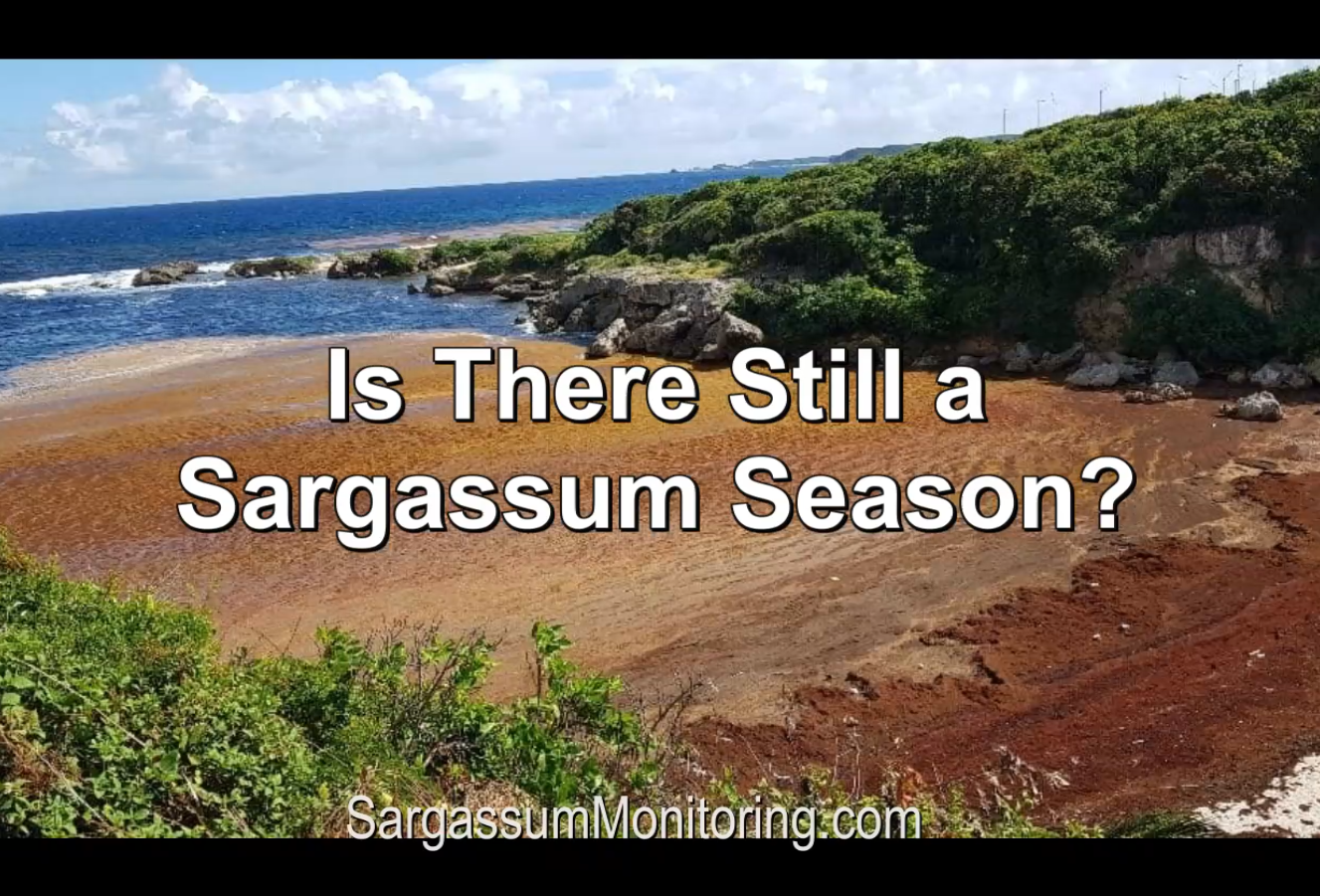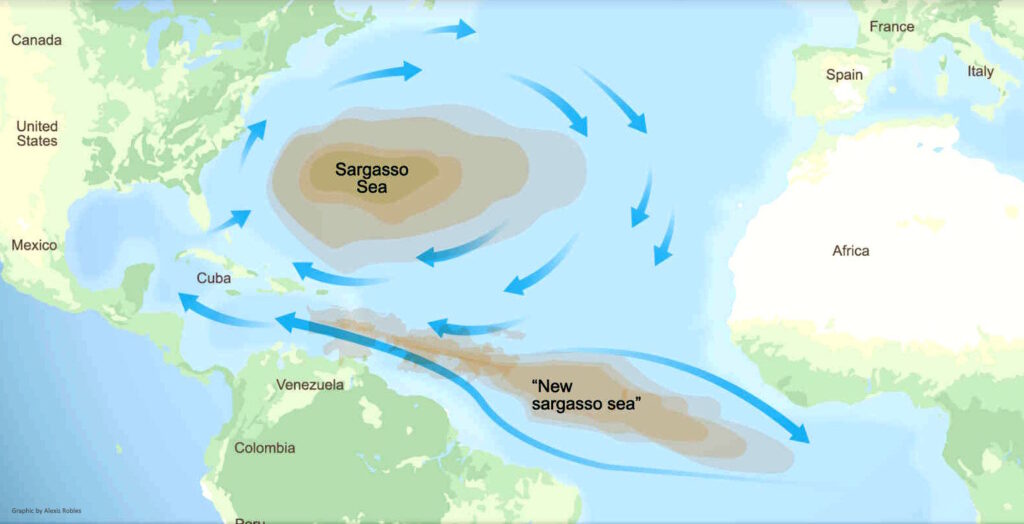This is the question that more and more tourists are asking following announcements of the “End of Sargassum Season” in the press and social media, while images of invaded beaches are still circulating.

But when is the “Sargassum Season” anyway?
A search on the Internet reveals very different periods associated with the “Sargassum Season” in various Caribbean regions, but the reality is more complex.
Announced Temporal Distribution in Different Regions:
Mexico: April to August / March to September
Guadeloupe: June to July / April to September / June to August
Martinique: May to November
Punta Cana: September to January / January to September
USA, Florida: March to October / March to July
Caribbean: May to December
However, it is incorrect to consider this as a specific season because, in reality, when these periods are spread across a calendar, they cover an entire year. Sargassum seaweed now seems to be present continuously, and its appearance no longer follows a predictable seasonal pattern.
Evolution of the Phenomenon since 2010:
Before 2010, sargassum developed in the initial Sargasso Sea, north of the Atlantic Ocean. They followed a seasonal cycle, with slow growth in winter and expansion during warm periods. In 2010, an exceptional event occurred, involving larger mats escaping from the initial sea and getting trapped in a calm area called by sailors “the doldrums” or the “Intertropical Convergence Zone.” This zone, also known as the “Zone Intertropicale de Convergence,” provides favorable conditions for the continuous development of sargassum throughout the year.

Causes of Sargassum Persistence:
The constant presence of sargassum is attributed to several factors. The second Sargasso Sea, located in a warm zone year-round, is regularly fed by nutrients from the Congo, Amazon, and Orinoco rivers, providing an environment conducive to their continuous development. Sahara dust and other elements also promote their growth. The algae patterns reaching the shores would now result from this second sea, explaining the continuous and increasing arrivals.
Ecological, Health, and Economic Impacts:
When sargassum reaches the beaches, they form compact mats that suffocate fauna, flora, and coral. Their decomposition releases potentially deadly and irritating gases, such as H2S and ammonia. Having absorbed pollutants like heavy metals, arsenic, and cadmium along the way, they contribute to major ecological, health, and economic consequences for Caribbean countries heavily dependent on tourism.
Conclusion:
When all announced sargassum seasons cover every month of the year, there is no longer a sargassum season.
If Sargassum Monitoring posts photos of sargassum arrivals throughout the year on its maps, there is no longer a sargassum season.
It is imperative to recognize that sargassum arrivals are no longer solely attributable to “Mother Nature” and no longer follow a seasonal pattern. The consequences of this phenomenon are real and require a conscious and proactive approach to find sustainable solutions. Arrival volumes and locations vary, and at present, they cannot be accurately predicted, but one thing is certain: there is no longer a sargassum season!
Advice:
If you want to know if a specific area and period are conducive to receiving sargassum algae, the only tools that can provide you with an answer are the arrival maps from 2018 to the present, visible on our website. Feel free to check them! This will give you an idea but does not guarantee at all that you will experience the same phenomenon for your next vacation.
To date, no tool or organization can accurately predict algae arrivals for the coming months and years. Therefore, we encourage you to follow the various forecasts we share on our site and the current year’s map evolution.
